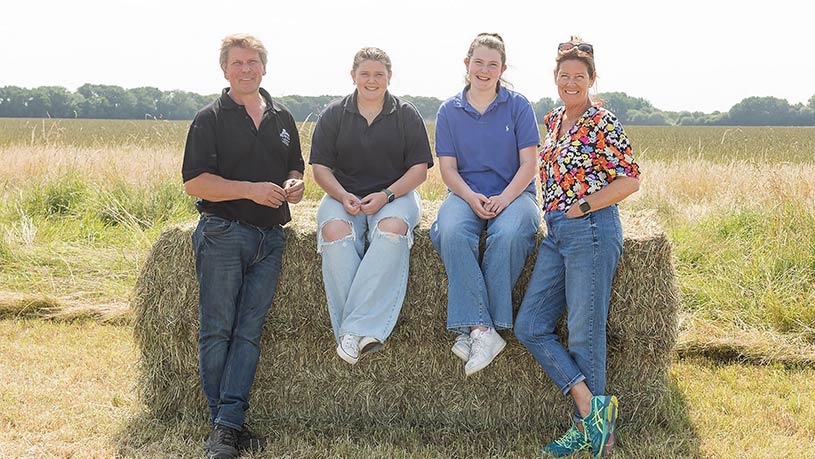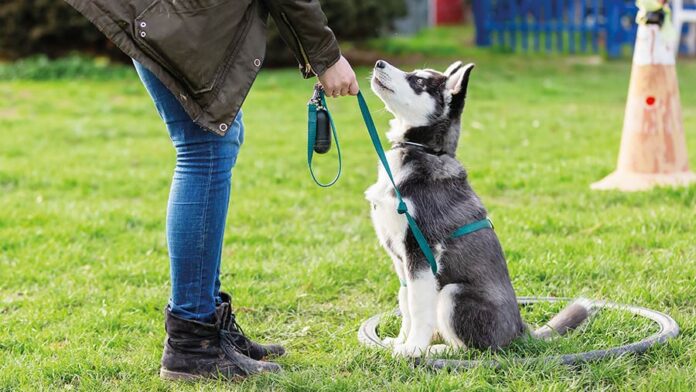If there was ever a right time to set up a business servicing the needs of pets, it is now, as there has never been so many owners.
For example, dog numbers in the UK have soared by more than three million since March 2020 when Covid-19 measures kicked in.
Those dogs need feeding, walking, grooming or a place to stay when their owners are away.
“This is a sector with lots of different options, from manufacturing food to converting a farm shed to a dog grooming parlour or boarding kennels, or dedicating a field to a dog exercise area, and there are all sort of ideas around those,’’ says Michael Mack, independent rural consultant.
See also: So you want to get paid for having dogs on your land?
With few regional variations in pet numbers, most farms are in a good position to tap into this sector, so what are the considerations?
Do I need planning permission?
This depends on business type, but in most cases some form of consent will be required.
As an example, creating an exercise area in a field used for agriculture requires change of use consent, and if you want to use a shed for a non-farming purpose, planning permission is needed.
“If the planned activity is materially different to agriculture, the effects of such activities need to be assessed to establish if they are acceptable for that location,’’ says Mr Mack.
Consider whether the development fits in with the local authority’s long-term planning strategy, as set out in the Local Plan.
Access can be a sticking point and locals might have concerns about traffic, lighting and noise.
“In December it is dark by 4pm so if you have a business that operates outdoors it will require powerful lighting, and that might be a problem if the field has neighbours,’’ says Mr Mack.
There may be restrictions as it may be viewed on as light pollution in a rural area without street lighting.
Environmental impact could also be a matter of concern if a dog exercise area is being considered – fields chosen for this type of activity are generally not very productive and for that reason generally have good biodiversity credentials.
Although there are multiple barriers, Mr Mack insists none are insurmountable.
“Consider how you can remove or deal with all those issues before you get to the planning stage,’’ he advises.
“In some cases it is simply a case of communicating with your neighbours before you apply for change of use, to put them in the picture and to provide reassurance.’’
Farm diversifications are generally received positively by local authorities but applicants still need to present a good case.
Are other permissions/licences/training/qualifications needed?
If you are considering manufacturing pet food, the Food Standards Agency requires it to be safe, produced under sanitary conditions, and to contain no harmful substances.
The primary legislation surrounding the composition of pet food is The Animal Feed (Composition, Marketing and Use) Regulations 2015.
The business also needs to be registered with the local Trading Standards office.
In the case of a dog exercise field, a waste management strategy must be part of the business plan.
Different authorities have their own views on how dog waste should be managed, so do some research on what is needed to satisfy your own authority.
Training and skills requirements are often overlooked by farmers in their diversification planning, says Mr Mack, so make sure this need is properly assessed.
Thorough sector or product research is essential. “With pet food you will need to work out what your point of difference to other brands might be, because consumers rarely switch brand,’’ he says.
Location
Most pet businesses need to be accessible to as many customers are possible. Farms on the urban fringe can set up pet ventures very simply because the customer base is there, but it will be much harder to attract customers in remote locations.
Set-up costs
With grant support for diversifications having diminished, working with a consultant to produce a business plan and understand the costings and how you will fund it is advisable.
If, for instance, the plan is to open a dog grooming parlour in a barn, the building might just need fitting out without structural changes so costs can be kept low.
If the plan is to run it as a separate enterprise and a loan is needed, some banks won’t support the application if the new enterprise is not part of the farming business.
© Sushytska/Adobe Stock
Are there legal considerations to bear in mind?
Legislation requires pet food producers to not mislead purchasers or to make medicinal claims.
If any ingredient originates from any animal then Animal and Plant Health Agency approval is required, even if these ingredients are deemed as fit for human consumption, as it is considered an animal by-product.
There is also the security and safety of dogs to consider if they are on site – talk this through with an insurance provider.
Tax and accounting considerations
If the diversification is growing crops as pet feed or bedding, for income tax purposes it is considered to be “husbandry” and would therefore be considered a trade of farming; this means that the profits from such diversifications can be included in farming profits and can qualify for averaging, advises tax specialist Zoe Chandler, of accountant Old Mill.
“As the profits will constitute those of a farming trade, so will any losses, meaning that sideways loss relief is available to reduce taxable income from other sources,’’ she says.
“It also means these profits can be added to other farming trade profits when considering the hobby farming loss relief restrictions.’’
What about insurance?
Seek advice from your insurance company on what cover is needed. Trade associations can offer guidance and discounts, but as a minimum, product liability insurance is needed if you are selling a product. Public liability is also needed if the business involves people coming onto the property.
Case study: Growing hay for pet feed
Ian and Helen Burrows, Selby, North Yorkshire

Ian and Helen Burrows and daughters, Lily and Isabel © Ian Burrows
Growing and packaging Timothy hay as high-quality food for small pets has allowed Ian and Helen Burrows to operate a profitable business on their 105ha family farm.
Mr Burrows was a first-time farmer when they took on the holding at Newhay Grange near Selby, North Yorkshire, from Helen’s father.
The land base was not big enough to generate a return from producing commodity crops – growing specialist feed for racehorses offered a higher return.
As that market became well supplied, with more growers moving into it, Mr Burrows did further research and found a niche to grow pet feed under the Newhay Feeds brand.
“I couldn’t find anyone producing Canadian quality Timothy hay in the UK. There were very few in Europe in general,’’ he says.
Mr Burrows worked with Newcastle and York universities on developing methods to preserve the nutrients and palatability of the hay and on product development.
The hay must be dried within 48 hours of cutting, needing a drier and a specialist process to remove dust and spores.
The volume that can be dried has been the limiting factor in growth, yet the business generates annual sales of 1.5m 1kg bags and is renting additional land to allow 202ha of Timothy to be grown.
The three most important qualities are that the product is dry, fresh and green.
All hay produced at Newhay is laboratory tested at Sciantec in Cawood, Yorkshire.
The products, sold through independent shops, large multiple retailers, supermarkets and direct sales, are suitable for domestic rabbits, guinea pigs and other small pets.
For this, accreditation as a feed manufacturer is needed, says Mr Burrows.
“Universal Feed Assurance Scheme (Ufas) and Feed Materials Assurance Scheme (Femmas) accreditation can take six months or more and it is expensive to administer the processes required,’’ he says.
The scale of the initial investment was significant – the couple came to farming from a standing start and had no machinery. On starting the business in 2006 they spent £500,000 on tractors, mowers, tedders, a rake and baler.
A further £150,000 was needed for the drier and more than £300,000 for the packing machine.
Fully enclosed vermin-proof storage needed to be built for 3,000 bales of hay and the packing machine.
The biggest challenge on starting out was a lack of research on which to draw.
“If you are growing grass for dairy cows there is oodles of information but Timothy as pet feed is not a standard commercial crop,’’ says Mr Burrows, who employs specialist agronomist advice for the crop.
He attended events and shows to gain knowledge, used the internet for research and worked with universities and several companies.
The pet feed market is much smaller than for horses. “It’s not about volume but producing the best quality product to capture the highest margin,’’ says Mr Burrows.
“The reality is that anyone can produce cheap hay but these products cost money to develop and the market is very specialised, and I don’t think that market is growing.’’
Credit: Source link










